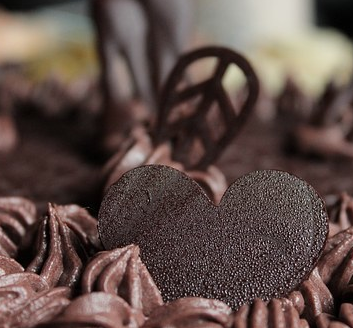Valentine’s Day is coming up, and we’re getting pretty excited for one of our favorite things about this holiday: chocolate.
THE HISTORY. Before chocolate become the treat we know and love, Mayan and Aztec cultures revered the cacao bean, incorporating it into various rituals because of its perceived magical powers. Chocolate didn’t become sweet until European explorers added vanilla and sugar, making the treat widely popular. Originally consumed exclusively as a drink, shops began to sell eating candies like the ones we eat today in the mid-1800s.
THE BEAN. Cacao beans themselves are found inside oval-shaped pods that hang from the cacao tree which is native to South America. The cacao “pod” has a leathery exterior and is filled with a creamy sweet pulp mixture. Within the pulp there are seeds that are extracted, fermented and dried. There are three types of cacao trees, and the seed varieties range in value and taste.

THE FACTS. Turns out Americans love chocolate—nearly half of the world’s supply is consumed by the US. An average cacao pod has 40 seeds, and it takes up to 1,000 seeds to produce 1 kilogram of chocolate (which is approximately 30 candy bars). Today, nearly 70% of the world’s cacao trees are located in West Africa. Annually, the world produces over 4.5 million tons of cacao beans.
THE HEALTH. Chocolate is rich in flavonoids and procyanidins, which are antioxidants associated with lowering risk for cancer and cardiovascular disease. According to a study done by Harvard’s medical school, health benefits linked to the consumption of chocolate may even extend into the realms of learning and memory retention.
Make your Valentine’s Day reservation today by clicking here or calling 303-443-9505.


